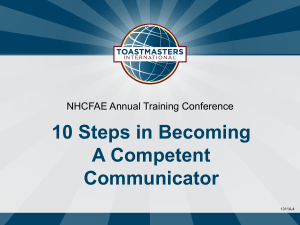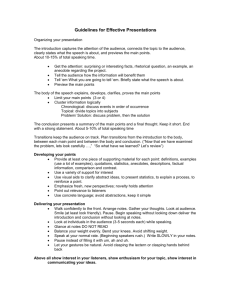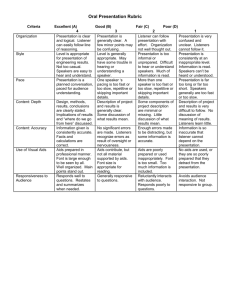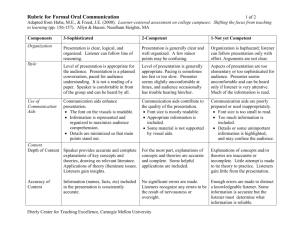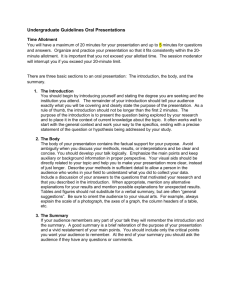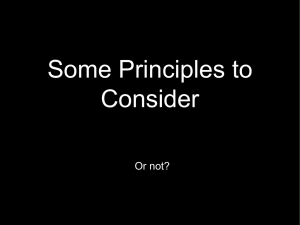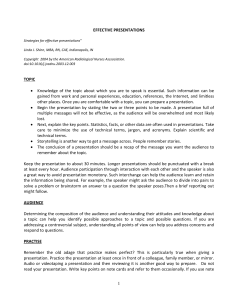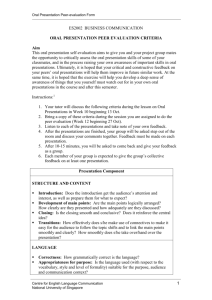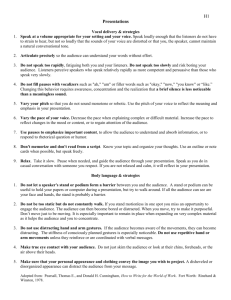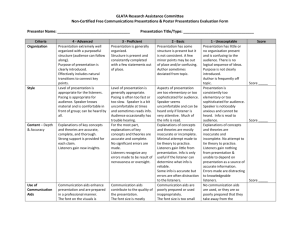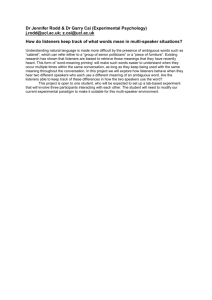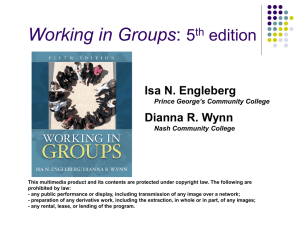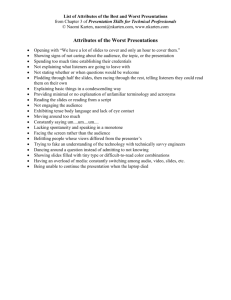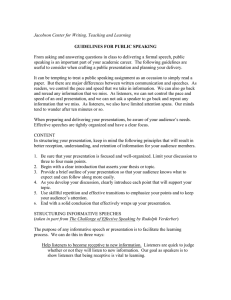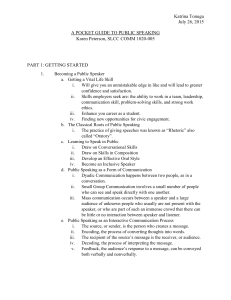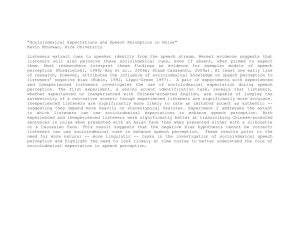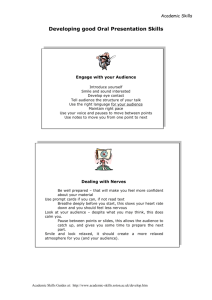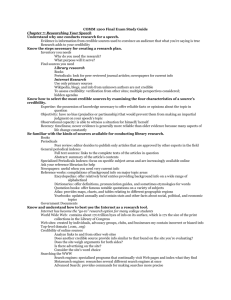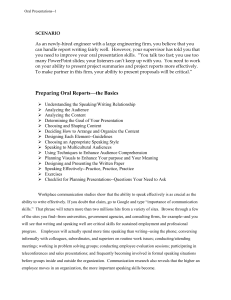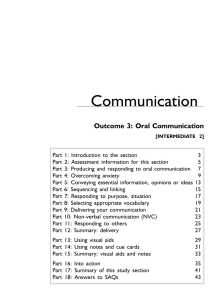D1.1 Oral Presentations
advertisement
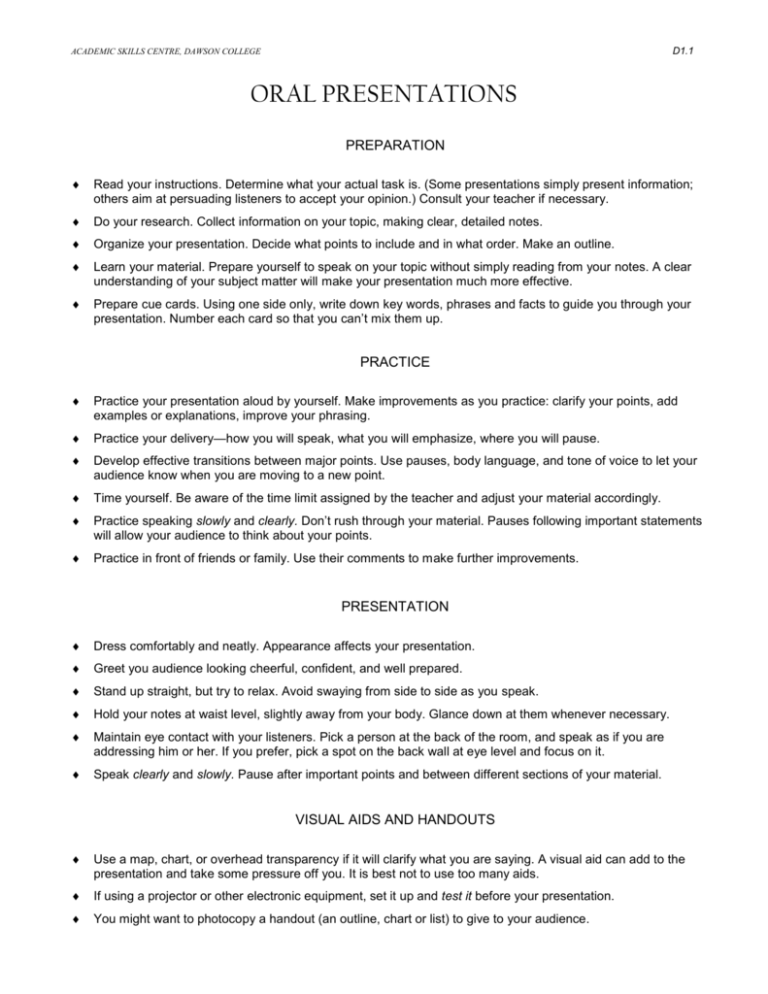
D1.1 ACADEMIC SKILLS CENTRE, DAWSON COLLEGE ORAL PRESENTATIONS PREPARATION Read your instructions. Determine what your actual task is. (Some presentations simply present information; others aim at persuading listeners to accept your opinion.) Consult your teacher if necessary. Do your research. Collect information on your topic, making clear, detailed notes. Organize your presentation. Decide what points to include and in what order. Make an outline. Learn your material. Prepare yourself to speak on your topic without simply reading from your notes. A clear understanding of your subject matter will make your presentation much more effective. Prepare cue cards. Using one side only, write down key words, phrases and facts to guide you through your presentation. Number each card so that you can’t mix them up. PRACTICE Practice your presentation aloud by yourself. Make improvements as you practice: clarify your points, add examples or explanations, improve your phrasing. Practice your delivery—how you will speak, what you will emphasize, where you will pause. Develop effective transitions between major points. Use pauses, body language, and tone of voice to let your audience know when you are moving to a new point. Time yourself. Be aware of the time limit assigned by the teacher and adjust your material accordingly. Practice speaking slowly and clearly. Don’t rush through your material. Pauses following important statements will allow your audience to think about your points. Practice in front of friends or family. Use their comments to make further improvements. PRESENTATION Dress comfortably and neatly. Appearance affects your presentation. Greet you audience looking cheerful, confident, and well prepared. Stand up straight, but try to relax. Avoid swaying from side to side as you speak. Hold your notes at waist level, slightly away from your body. Glance down at them whenever necessary. Maintain eye contact with your listeners. Pick a person at the back of the room, and speak as if you are addressing him or her. If you prefer, pick a spot on the back wall at eye level and focus on it. Speak clearly and slowly. Pause after important points and between different sections of your material. VISUAL AIDS AND HANDOUTS Use a map, chart, or overhead transparency if it will clarify what you are saying. A visual aid can add to the presentation and take some pressure off you. It is best not to use too many aids. If using a projector or other electronic equipment, set it up and test it before your presentation. You might want to photocopy a handout (an outline, chart or list) to give to your audience. ORAL PRESENTATION CHECKLIST For any presentation: I have gathered plenty of relevant, interesting information through my research. I have organized my information into a logical sequence. I have familiarized myself thoroughly with my material. I can support my points with examples whenever possible. I have prepared visual aids or a handout sheet to clarify my points (if necessary). I am prepared to answer questions on my topic. For a presentation that offers information on a topic: I can deal with my topic in a thorough and interesting way. I will provide appropriate background information and definitions of key terms. I will make good use of examples, anecdotes, figures, etc. I will identify major sources of information by author and/or title. I will conclude with a review of my main points and with appropriate closing thoughts. For a presentation based on a persuasive argument: I will state my position clearly at the beginning. I can build a strong case to support my opinion. I will mention and criticize opposing arguments. I will refer to my sources by author and/or title. I will conclude with a review of my evidence and a clear restatement of my position. For an effective delivery: I will appear confident and well organized due to good preparation and practice. I will check the order of my cue cards before I speak. I will stay relaxed by breathing calmly. I will maintain eye contact with my listeners. I will speak clearly and slowly, pausing when appropriate. I will speak loudly enough to be heard easily at the back of the room. I will eliminate "…uhm…uh…” from my presentation. I will stand straight but relaxed, without fidgeting or swaying from side to side. I will keep my audience interested by showing my own enthusiasm and interest. For more advice, visit the Academic Skills Centre (4E.3) or consult the book Speaking for Success: The Canadian Guide by Anthony Lieb. If anxiety over oral presentations is a problem, speak to a counsellor in 2D.2. Workshops on public-speaking anxiety are held regularly by Counselling and Career Development. AD / WM 2004

